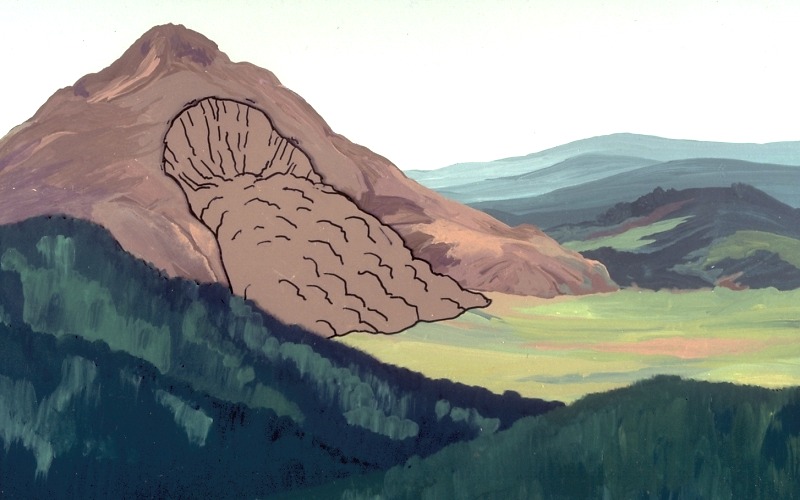- debris avalanche
- ALASKA VOLCANO OBSERVATORY GLOSSARY
Rapidly moving, dry flows of disaggregated rock debris, sand, and silt. Volcanic debris avalanches commonly form by some type of structural collapse of the volcano, usually the steep front of the cooled lava dome, or other parts of the upper edifice. A large portion of the volcano may become unstable, break away from the volcanic massif, and become an avalanche. A debris avalanche may be triggered by an eruption or earthquake. Debris avalanches move at velocities ranging from a few tens of meters per second to more than 100 meters per second and behave like complex granular flows or slide flows. Commonly they are quite voluminous (greater than 10 cubic kilometers) and may run out considerable distances (up to 85 kilometers) from their source. The resulting debris-avalanche deposit usually exhibits hummocky surface morphology.\USGS PHOTO GLOSSARY OF VOLCANIC TERMSor volcanic landslideDebris avalanches are moving masses of rock, soil and snow that occur when the flank of a mountain or volcano collapses and slides downslope. As the moving debris rushes down a volcano and into river valleys, it incorporates water, snow, trees, bridges, buildings, and anything else in the way. Debris avalanches may travel several kilometers before coming to rest, or they may transform into more water-rich lahars, which travel many tens of kilometers downstream.\
 \Sketch and animation by B. MyersA debris avalanche rushes down the side of a volcano to the valley floor. Many such debris avalanches transform into lahars and travel tens of kilometers from the volcano. Note horseshoe shaped crater on volcano's side, which is the scar created by the avalanche.
\Sketch and animation by B. MyersA debris avalanche rushes down the side of a volcano to the valley floor. Many such debris avalanches transform into lahars and travel tens of kilometers from the volcano. Note horseshoe shaped crater on volcano's side, which is the scar created by the avalanche.
Glossary of volcanic terms. - University of Wisconsin Oshkosh. G. J. Hudak. 2001.

